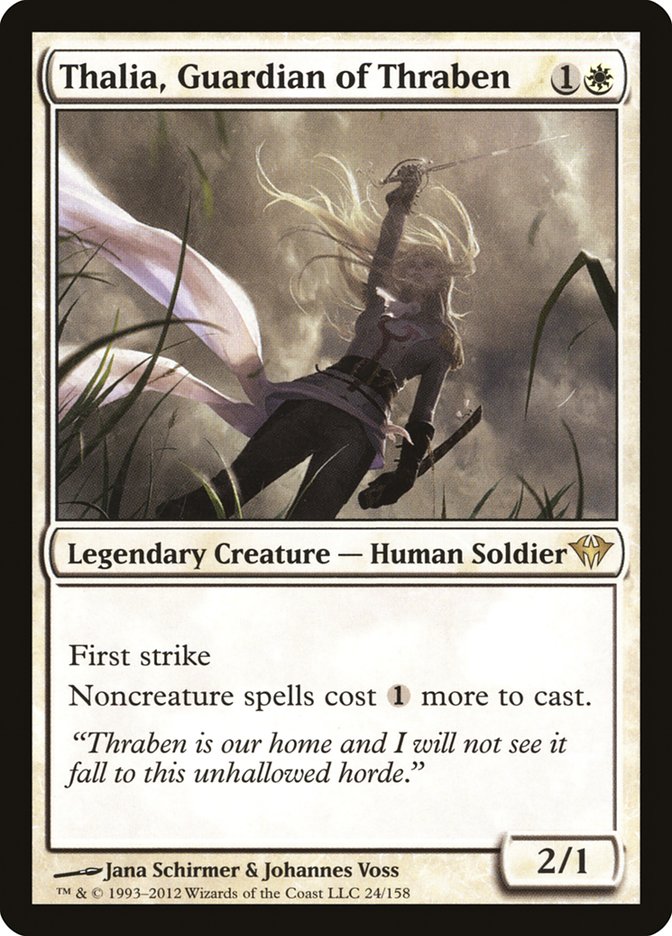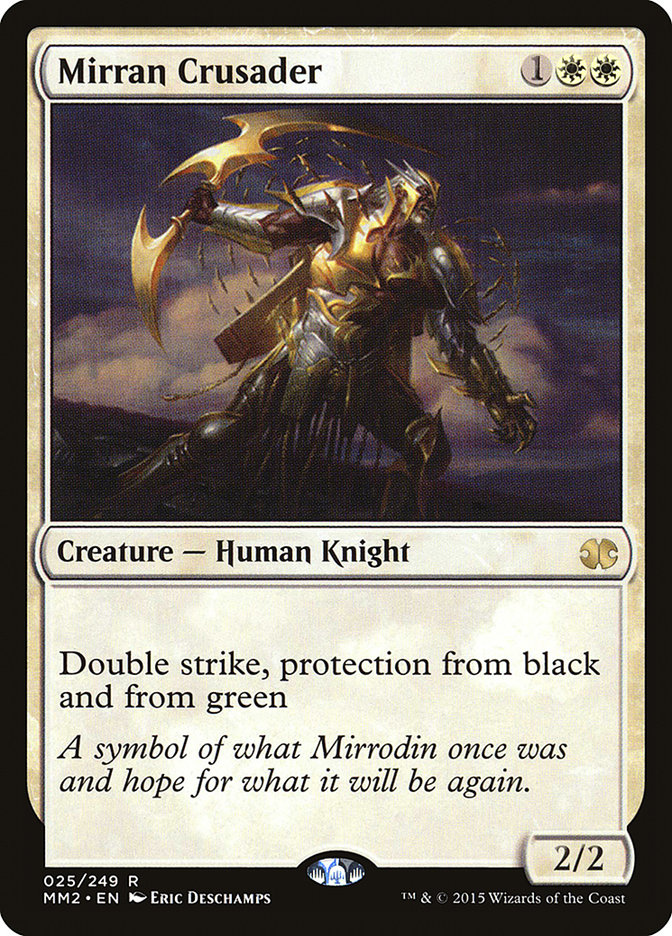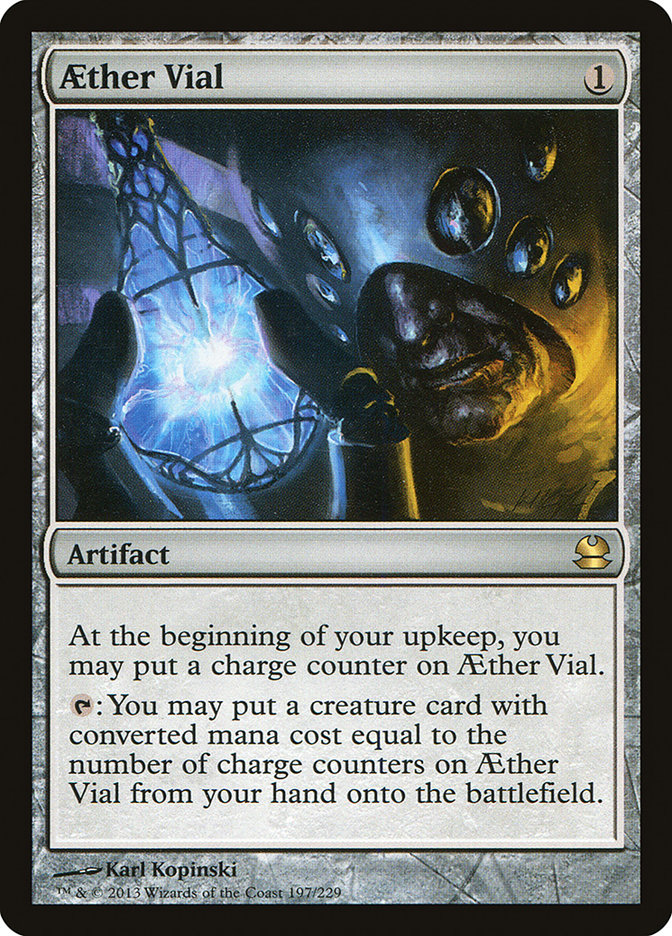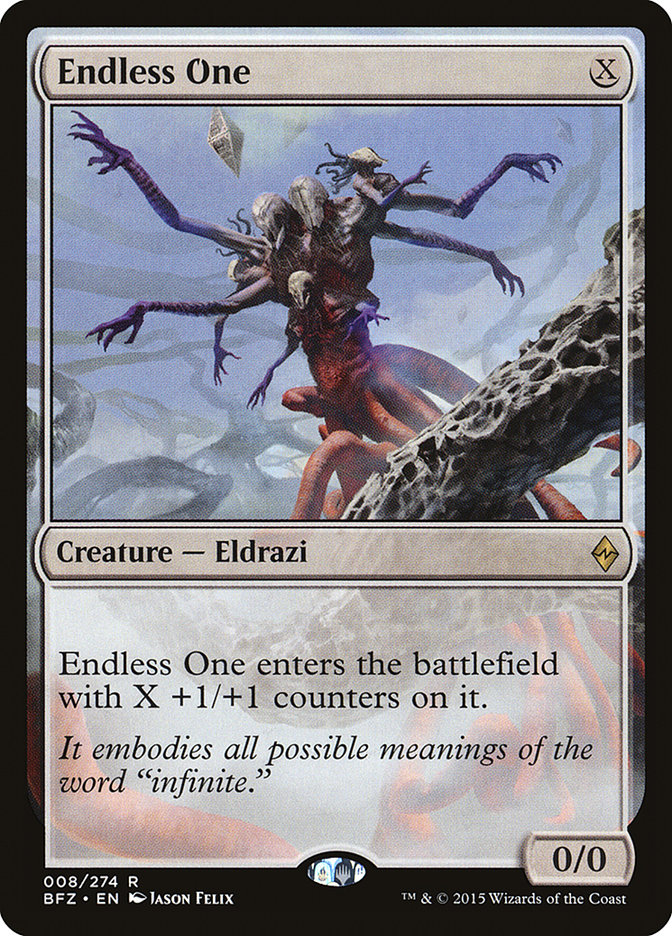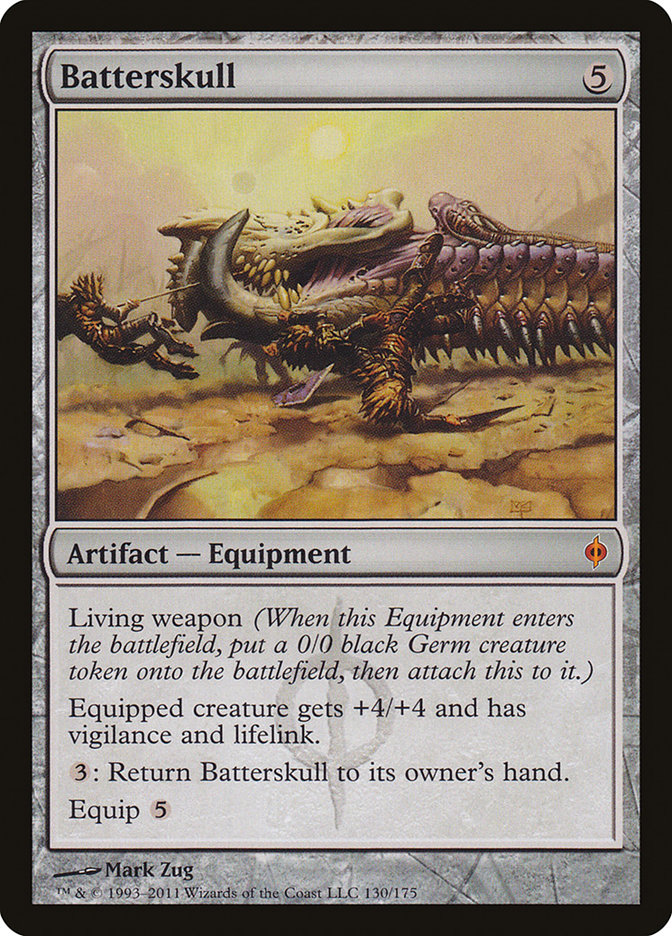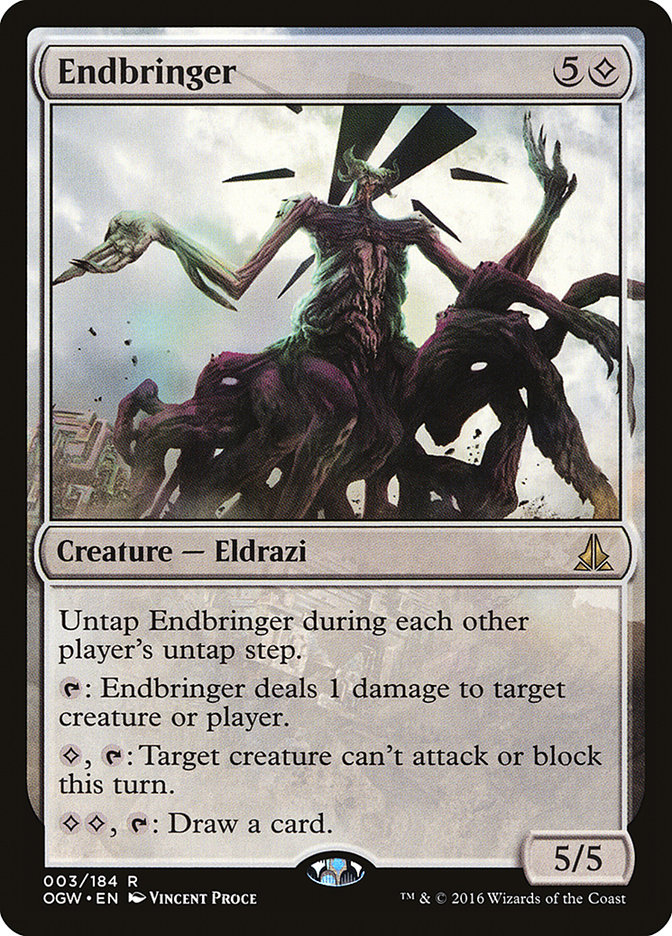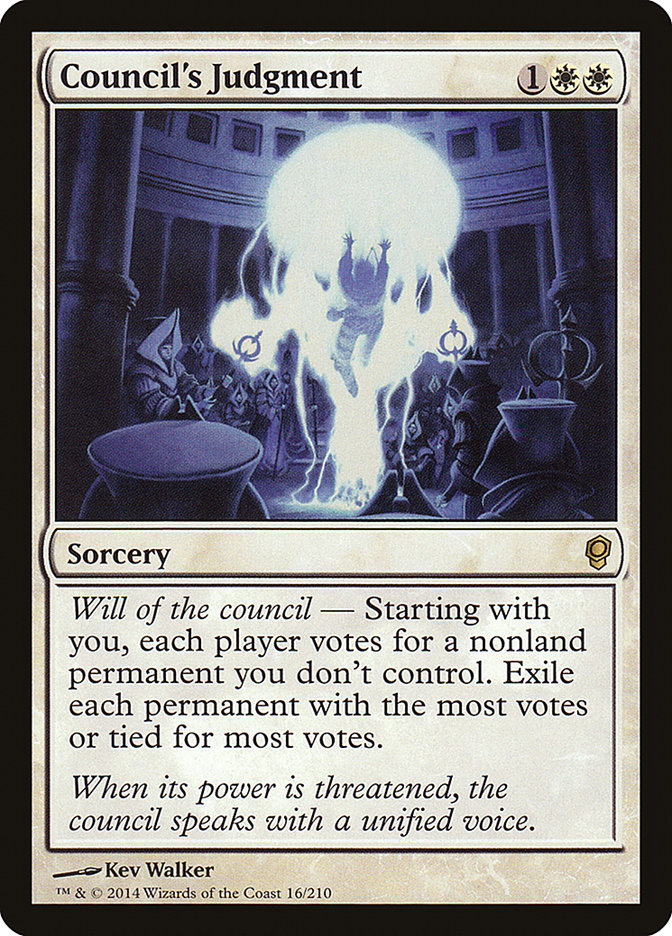The strategy behind the deck is simple. It starts by kicking you in the shin. While you’re on the ground and distracted, it then goes behind the barn to find the most frayed and prickly piece of rope available. It drags the piece of rope behind it while cheerfully whistling. Right when you are about to go give it a piece of your mind, it throws the rope around your neck and almost effortlessly starts choking the life right out of you. Still whistling and completely detached from its own actions, it looks into your eyes as you lose consciousness. While you gasp for what could be your last breath, it leans in, almost as if it was going to whisper something in your ear. It does.
“Ready for game 2?”
Death and Taxes has historically never been on the side of good. If Darth Vader played Magic, I would bet a lot of money he rocked this deck. That’s because the deck is designed to constantly disrupt an opponent’s resources. I’m usually not the type to play decks like this, but testing for an event changed my perception of Legacy forever.
My story began with learning Death and Taxes at the 2015 Players’ Championship. I predicted (correctly) that the field would be filled with Delver variants, Storm, and Miracles. Now, the Joe Lossett matchup might not be the best in the world, but the matchup is closer than one would think. Everything else I assumed would be there would be great for Death and Taxes, but the key to the predicted success was that no one would expect it. Lo and behold, the deck was not on anyone’s radar, and Tom Ross, Todd Anderson, and I had a combined record against the rest of the field of 8-0.
From my experience at the Players’ Championship, I realized I was in love with this deck and wanted to play it in my next Legacy event. Sadly, it won’t be #SCGPHILLY since I am on the Pro Point grind and will be at Grand Prix Houston instead, but I do suggest this list to anyone who plays the deck.
Creatures (26)
- 4 Mother of Runes
- 3 Serra Avenger
- 4 Flickerwisp
- 4 Stoneforge Mystic
- 2 Mirran Crusader
- 4 Phyrexian Revoker
- 4 Thalia, Guardian of Thraben
- 1 Spirit of the Labyrinth
Lands (23)
Spells (11)

As you can see, the manabase is filled with ways to disrupt an opponent. Wasteland, Rishadan Port, and even sometimes Karakas can help manipulate the game in your favor by keeping the opponent off-kilter.
Once we look at the spell,s we even get a better understanding of how disruptive this deck can be. Thalia, Guardian of Thraben helps keep the unfairness of Brainstorm down by making it cost more than its undercosted one mana. Cards like Flickerwhisp and Phyrexian Revoker do a good job of manipulating resources as well. Mother of Runes is just filthy at making their removal almost useless if she can activate her ability. All of these effects in combination give the deck enough time to beat down before the opponent can stabilize with “more powerful” spells.
The heart and soul of the deck is Aether Vial. This one-mana artifact allows the deck to produce “virtual” mana for the creatures, which lets the deck focus its lands on disrupting the opponent or activating the equipment. There are few opening hands that aren’t keepable with Aether Vial in hand, and the deck would not exist without it.
A lot of people think of Death and Taxes as a deck that has polarizing good and bad matchups. My experiences with the deck have shown that to be false. The deck is actually just one of the best decks in the format, but not played by enough people to prove that to be the case. There will be times where the deck will be poorly positioned and the opposite, but for the most part the deck is a fine choice. It’s just good at what it does and the format is filled with too many Delvers of Secrets, Griselbrands, and now potentially Endless Ones.
Death and Taxes isn’t an easy deck to play. In fact, I consider it to be the most difficult deck for me to have learned in Legacy to date. Many of the cards share the same converted mana cost, which makes tough decisions even more complex. What separates the good Death and Taxes players from the bad is a deep understanding of how each deck in the format functions and just how to maneuver around each matchup. I know that sounds fairly vague, but it’s just the sad truth. The format is vast, which makes it even more difficult to obtain that general understanding of the ins and outs.
Honestly, the first thing I did when I started playing this deck was watch every match of the deck on Youtube that The SCG Tour® could provide. This gave me a deeper understanding of how my matchups are supposed to play out — and the courage to play the deck, since I never found a single video where Death and Taxes lost. I would highly suggest watching all these videos if you wanted to start playing this deck. It would take me more words than can fit in a book to explain everything about the deck, but those videos are invaluable for a future Death and Taxes player’s success.
So why am I talking about this deck for #SCGPHILLY in the first place? Well I think this is the best deck for the weekend thanks to its matchup against the new bogeyman: Colorless Eldrazi. Now, we don’t know if the tentacle monsters are actually going to take over another format, but my gut says the deck is not only going to be good, but that the hype around it will make it highly played as well. Most of the cards in the deck are already in the Modern version, making it a relatively easy transition over to Legacy. It’s also a great investment for Modern players to transition over to Legacy, since we all know this deck is getting the Wizards of the Coast axe in Modern in a couple of months and I highly doubt this will happen for Legacy.
Here’s my rough list for what I think Colorless Eldrazi should look like.
Creatures (25)
- 2 Phyrexian Revoker
- 4 Endless One
- 3 Endbringer
- 4 Eldrazi Mimic
- 4 Reality Smasher
- 4 Thought-Knot Seer
- 4 Matter Reshaper
Lands (25)
Spells (10)

Death and Taxes is pretty well-positioned in the matchup, even though it has useless cards like Mother of Runes and Phyrexian Revoker. A higher curve alongside the additional lands compared to other Legacy decks helps out against the denial strategies of Thorn of Amethyst and Chalice of the Void. Flickerwisp plays an important role, thanks to its ability to exile Chalice of the Void long enough for it to come back with zero counters. The same can be said against Eldrazi’s Endless Ones. Colorless Eldrazi will want to take out most of its denial-based cards thanks to how inefficient they are. This gives us a significant advantage in game 1.
We saw Batterskull out of Blue Moon have a huge impact against the Modern version of the deck, and that’s exactly what happens in this format as well. Turn 2 Stoneforge Mystic is great against the Eldrazi, thanks to how difficult getting Batterskull off the table can be. They don’t really specialize in creature removal.
Last, we have Swords to Plowshares, which is a perfect removal spell for all of these gigantic dirtbags. After sideboard, we even get a Path to Exile, which is better than Swords to Plowshares; since the deck doesn’t run any Wastes, they gain no lands or life. I might even consider playing a second copy of the one-mana removal spell, since it is so important in the matchup. Endbringer is in fact very good against this deck.
Colorless Eldrazi will try to get on the battlefield as quickly as possible. They don’t have much staying power, thanks to all of their redundant lands, Chalice of the Voids, and other lock pieces. This means that trading is more beneficial from our side. Making sure they don’t keep creatures around will be better early on than trying to race or build a battlefield position. They do have great topdecks like Reality Smasher and Endbringer, but for the most part, they aren’t as good off the top as we are. Save non-crucial removal for spells like Endbringer when you can and constantly trade off two of your bodies for one of theirs.
Sideboarded games get easier and easier, depending on how many removal spells you have in the sideboard. Right now we have two Council’s Judgment, a single Path to Exile, and one Ratchet Bomb. More removal could find a home if you deem it necessary, but I have not had too much of an issue in my limited testing so far!
Now that we “think” we’ve found a good deck against our new Eldrazi overlords, what does that mean for the deck in other matchups? Well, my first prediction is that fast combo decks like Storm will be pushed out, thanks to the uptick in Chalice of the Void. The matchup isn’t the best for Death and Taxes, so I’m happy it might be played less. More midrange decks could start popping up and the format might slow down, which isn’t a bad thing for Death and Taxes, thanks to all the late-game trumps the deck has, like Mother of Runes and Batterskull.
In the end, it’s still Legacy and every deck is going to show up. I just believe that our Eldrazi overlords might be one of the most-played decks at #SCGPHILLY thanks to all the hype. This tide could ebb if the deck doesn’t put up some good results, but it has proven to be good enough to go 5-0 in Leagues in Magic Online. Luckily there are two certainties in life: the Eldrazi are coming, and we have the answer!


